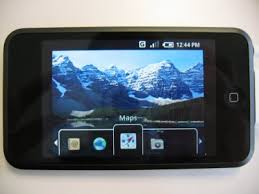"What is the use of a book," thought Alice, "without pictures or conversations?"
Lewis Carroll (from thinkexist.com)
On Tuesday, August 10th, Mandy from Enjoy and Embrace Learning and I are hosting a blogging event: August 10th is 10 for 10 picture books. The list of bloggers that will be sharing their 10 must-have picture books is growing. We're getting excited about the event, and hoping you'll join us. As Julie of Raising Readers and Writers said, "Guess I better save my money...I'll be getting more ideas for books to buy."
To get ready for the event I've begun to consider which 10 books I will add to my list. I've started to compile my list of 10, but I have realized how difficult (and fun!) it is going to be. Only 10 books!! My classroom is full of books I've collected over the years, and I've spent most of this summer updating my library. Only 10 books?? How is one to narrow the list to 10 when there are so many amazing books out there?? Right now I am sure of 1 of my 10 (it's a secret). I have old books I love. New books I'm amazed by. Authors I couldn't live without. Illustrators who captivate my students.
All this talk about picking 10 books to share with everyone has me considering characteristics of a picture book which make it perfect for the classroom. Besides being hard covered, and taped well, I'm thinking picture books for teaching need:
- Wonderful words: Picture books that beg to be read aloud in a classroom need wonderful words. There needs to be a rhythm to language, a way the words just fall out and sound like music. The words need to allow a little play with your voice. Places where the words say slow down, speed up, talk softly, pause. Words to help you to see the place, share the character's feelings, and participate in the story. My students love books with repeating phrases and words that are fun to say.
- Illustrations: In picture books illustrations help tell the story. Often they create meaning in ways that words cannot. How often have I been reading to my students and they notice something in the illustrations that is important to the story, but because I am so focused on the words I have completely missed the clue?
- Length appropriate for attention: It is important to consider the length of a text for read aloud. Let's face it, kindergarteners need a different length of text than a second grader. In first grade, at the beginning of the year, shorter texts are more successful. As the year moves on students are able to attend for longer periods of time so I can share longer stories then.
- Structured appropriately: Picture books that work best in the classroom are structured in a way that makes sense to children. Characters are manageable and dialogue is easy to understand. My students always love picture books with strong characters or situations they can connect to their daily lives.
- Mentor texts: While not a necessity for read aloud success, I like to share books with children which can serve as a mentor for their writing. I think it is important for my students to be able to say, "I can write a book like that," or "I can try that," or "I can illustrate like that."
- Anchor text: The picture books I couldn't live without are those that not only appeal to children, but also support the thinking and learning in the classroom. Let's face it, I'm a teacher. The best books for the classroom are books we can use for different types of teaching. Books which allow us to anchor our thinking and learning. They're books that make us connect, predict, wonder, ask questions, synthesize, debate, and reflect. Interestingly the best books do all of that anyway.
- Loved by kids: The best picture books for the classroom are those children love. They are the books students want to take home every night. The books classes have loved over and over again. They are books that make kids laugh and touch their hearts. Of course, I think if we love a book enough it will show as we read aloud, and students will be drawn to the story. Different teachers have success with different books. However, I think we have to remember we are adults and sometimes the books that appeal to us are not the ones are students will love. We have to read the silly books. The series books. The books kids want to pick up when they go to the library.
So, I'm off to pick out book #2 for my list. Here are a few sites you might be interesting in visiting:
- Mem Fox gives her read aloud commandments.
- Lester Laminack tells of his vision for children (scroll to the bottom), "Where teachers read aloud with the zeal of a street performer and the frequency of a birdsong"
- President Obama gives his read aloud tips. Stop by to see what you think.
- This site has some reasons for using picture books with children and many great links.






